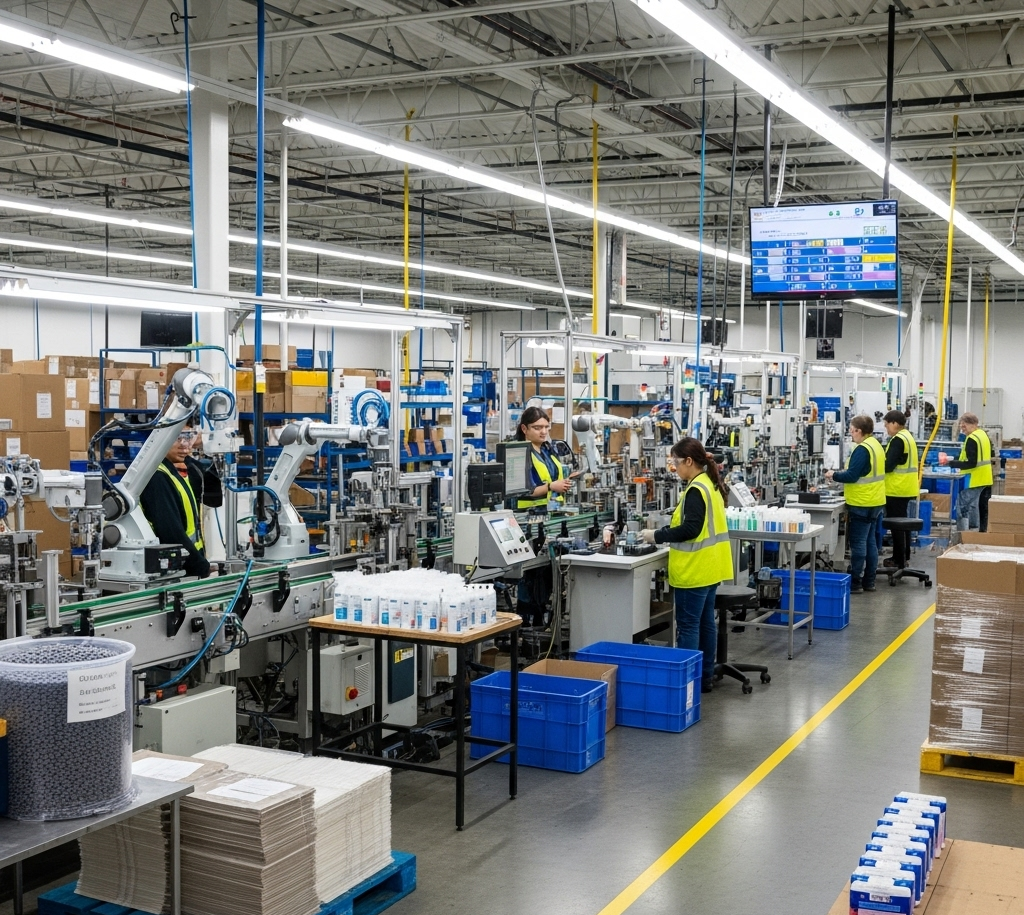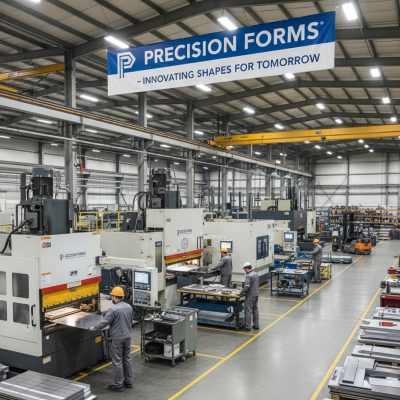In today’s fast-paced market, small consumer goods manufacturers face unique challenges in staying competitive while managing limited resources. One area ripe for transformation is procurement—the process of sourcing, purchasing, and managing the materials needed for production. Manual procurement processes can be time-consuming, error-prone, and costly, draining valuable resources from small businesses. By automating procurement processes, these manufacturers can streamline operations, reduce costs, and focus on growth. This blog post explores the benefits, tools, and steps for automating procurement for small consumer goods manufacturers.
Why Automate Procurement?
For small manufacturers, procurement often involves juggling multiple suppliers, tracking inventory, and ensuring timely delivery of raw materials—all while keeping costs low. Manual processes, such as spreadsheets or paper-based systems, can lead to inefficiencies like delayed orders, overstocking, or missed discounts. Automation addresses these pain points by:
Increasing Efficiency: Automated systems handle repetitive tasks like purchase order creation, supplier communication, and invoice matching, freeing up time for strategic work.
Reducing Errors: Automation minimizes human error in data entry, calculations, and order tracking, ensuring accuracy in procurement records.
Improving Cost Management: Real-time insights into spending patterns and supplier performance help manufacturers negotiate better deals and avoid overpaying.
Enhancing Scalability: As production scales, automated systems can handle increased complexity without requiring additional staff.
Ensuring Compliance: Automated tools can enforce procurement policies and maintain audit trails, reducing the risk of non-compliance with regulations or internal standards.
Key Areas to Automate
Small consumer goods manufacturers can focus on automating the following procurement processes:
Supplier Management: Maintain a centralized database of supplier information, including pricing, lead times, and performance metrics. Automation tools can track supplier reliability and flag issues like late deliveries.
Purchase Order Processing: Automate the creation, approval, and tracking of purchase orders to reduce manual paperwork and speed up approvals.
Inventory Management: Integrate procurement with inventory systems to automatically reorder materials when stock levels fall below a set threshold.
Invoice Reconciliation: Use automation to match invoices with purchase orders and delivery receipts, flagging discrepancies for review.
Reporting and Analytics: Generate real-time reports on spending, supplier performance, and procurement efficiency to inform decision-making.
Tools for Automation
A range of tools is available to help small manufacturers automate procurement, tailored to different budgets and needs:
Procurement Software: Platforms like Lasso Procurement offer end-to-end solutions for purchase orders, approvals, and supplier management. These tools often include mobile apps for on-the-go access.
Inventory Management Systems: Tools like TradeGecko or Fishbowl integrate procurement with inventory tracking, ensuring materials are reordered efficiently.
Accounting Integration: Software like QuickBooks or Xero can sync with procurement tools to automate invoice reconciliation and expense tracking.
ERP Systems: For manufacturers ready to invest, lightweight ERP solutions like NetSuite or Odoo provide comprehensive automation across procurement, production, and sales.
When selecting tools, prioritize cloud-based solutions for accessibility, scalability, and ease of updates. Look for user-friendly interfaces and integrations with existing systems to minimize disruption.
Steps to Implement Procurement Automation
Transitioning to an automated procurement system requires careful planning. Here’s a step-by-step guide:
Assess Current Processes: Map out existing procurement workflows to identify bottlenecks, manual tasks, and areas for improvement. Involve key stakeholders to understand pain points.
Define Goals and Requirements: Set clear objectives, such as reducing procurement cycle time by 20% or cutting errors by 50%. List must-have features, like mobile access or integration with accounting software.
Choose the Right Tools: Research and select tools that align with your budget, technical capabilities, and business needs. Start with a pilot project to test the solution on a small scale.
Train Your Team: Provide training to ensure employees understand how to use the new system. Create documentation for common tasks to support adoption.
Integrate and Test: Connect the automation tools with existing systems (e.g., inventory or accounting software) and run tests to ensure seamless data flow.
Monitor and Optimize: Track key performance indicators (KPIs) like order processing time, cost savings, and supplier performance. Use insights to refine processes over time.
Challenges and How to Overcome Them
While automation offers significant benefits, small manufacturers may face challenges during implementation:
Cost Concerns: Automation tools can seem expensive for small businesses. Start with affordable, scalable solutions and focus on high-impact areas like purchase order automation to justify the investment.
Resistance to Change: Employees may resist new systems. Address this by involving them early, highlighting benefits like reduced workload, and offering hands-on training.
Integration Issues: Legacy systems may not integrate easily with modern tools. Choose platforms with robust APIs or use middleware like Lasso to bridge gaps.
Data Migration: Transferring data from spreadsheets to new systems can be complex. Dedicate time to clean and organize data before migration to avoid errors.
Getting Started
For small consumer goods manufacturers, automating procurement is a game-changer that boosts efficiency, reduces costs, and supports growth. Start small by automating one or two processes, such as purchase order management or inventory tracking, and scale up as you see results. With the right tools and a clear plan, automation can transform procurement from a time-consuming chore into a strategic advantage.
Get the White Paper: Streamlining Procurement Processes for SMB Manufacturers
Get instant access to our white paper on Must-Know Procurement Tips for SMB Manufacturers by filling out the form below.
Get in Touch
Learn more about Lasso supply chain solutions for SMB manufacturers
Please complete the form and we will be in touch as soon as possible.







